The Magic of Echo
Canadian Success on the Global Stage (BRONZE)
Client Credits: Amazon
Amazon
Agency Credits: Leo Burnett
Agency: Leo Burnett, Toronto
Chief Creative Officer: Judy John
Digital Creative Director: Sean Ganann
Copywriter: Mike Johnson, Judy John, Dave Barber
Art Director: Jordan Gladman, Jason Lee
Executive Producer: Franca Piacente
Chief Client Officer: Mark Renshaw
Group Account Director: Gail Dhruv
Account Supervisor: Kayla Osmond
Chief Strategy Officer: Brent Nelsen
Experience Planner: Taylor Smith
Agency Partner: Rokkan, New York
Planning Director: Kit Altin, Sean Miller
Experience Planner: Lindsay Williams
Production Company: Soft Citizen, Smuggler New York
Executive Producer: Link York, Eva Preger, Shannon Jones
Director: Randy Krallman
Line Producer: Ian Blain
Editing Company: Saints Editorial
Editor: Brian Williams, Alex Short
Post Producer: Stephanie Hickman, Michelle Rich
VFX/SPX: The Vanity, Alter Ego
Producer: Sean Cochrane, Bobbi Denton, Eric Whipp
Music House: Grayson Matthews
Producer: Dave Sorbora, Tom Westin
Executive Producer: Bridget Flynn; Engineer: Bill Hermans
Media Agency: Initiative
Media Client Director: Anita Sites
Media Managing Director: Anne-Marie Yanez
Talent and Music Negotiations: Platinum Rye
Section I — CASE PARAMETERS
| Business Results Period (Consecutive Months): | January – March 2016 |
| Start of Advertising/Communication Effort: | January 27, 2016 |
| Base Period as a Benchmark: | January 27 – February 15, 2016 |
| Geographic Area: | USA |
| Budget for this effort: | Over $5 million |
Section IA — CASE OVERVIEW
Why should this case win in the category (ies) you have entered?
When Amazon realized that just having another cool, new device in the over-crowded voice-activated technology space wasn’t enough to make it sell, they turned to their new Canadian agency partner to help them re-launch Echo.
Not only was did this new campaign have to increase sales of Amazon’s latest technology against a glut of new competition, it had to so by breaking through during the Super Bowl!
The campaign – #BaldwinBowl – didn’t just drive above average ad performance during the Super Bowl, the sales increase it generated has made it the most successful ad campaign in Amazon’s history.
Section II — THE CLIENT’s BUSINESS ISSUES/OPPORTUNITIES
a) Describe the Client’s business, competition and relevant history:
How do you convince people to adopt yet another technology product that offers something similar to what they already own?
This was the challenge that Amazon posed to their new Canadian agency as they looked to re-launch the product in the US. In 2015, Amazon had launched Echo – a voice-enabled digital assistant that brings to life all of Amazon’s services – that achieved success with early adopters, but failed to connect with a wider audience.
Add to this an increasing number of new entrants in the voice-enabled technology space – such as Google Now and Microsoft Cortana – Echo needed to find a way to crack the adoption code that would lead to significant sales growth within the market.
b) Describe the Client’s Business Issues/Opportunities to be addressed by the campaign:
Creating a breakthrough success in the tech category is inherently difficult. With 3,600 new technology products launching every year, in the US alone, most consumers simply ignore them out of skepticism or disbelief[1]. In fact, only 1 in 3 people believe that new technologies are actually made to improve their lives[2]. With most people owning one of the ‘essential three’: a laptop, a smartphone and tablet; people bemoan obsolescence and question the necessity and redundancy in any new offer. Echo’s challenge would lie in trying to convince people that it could truly improve their lives in ways existing technology couldn’t.
Amazon asked us to help crack the adoption code for Echo and motivate people to consider and buy. And to do it during America’s biggest advertising event – Super Bowl – to not only maximize reach against a mass target, but also take advantage of the content opportunities pre, during and post-game to demonstrate the various features of Echo.
c) Resulting Business Objectives: Include how these will be measured:
Given Echo was Amazon’s initial product entry into voice enabled technology, the brand did not have any previous learning’s to base specific target measures on prior to launch. Instead, they identified the four following macro objectives for Echo:
•Re-Launch Amazon Echo demonstrating its capabilities
•Drive above norm Amazon ad, brand and message memorability
•Drive web traffic and sales for Amazon Echo
[1] Inc. “Why The Consumer Electronics Show Is Dead – For Product Launches”, 2016
[2] Mintel, Futures Company 2015
Section III — YOUR STRATEGIC THINKING
a) What new learnings/insights did you uncover?
Cracking the adoption code.
Before we even looked at articulating a strategy to tell Echo’s story, the planning team took a step back to understand drivers of advertising effectiveness amongst tech leaders like Apple and Microsoft. Based on previous case evidence and in market sales response, we believed these brands had a unique communications formula to successfully launch products that garnered higher adoption. We needed to understand why they were so effective in getting people to adopt them, and what approaches they took to make it happen.
A dissection of advertising effectiveness in the tech category revealed two key insights for us:
1. Help me understand how it simplifies and streamlines my life
Communications that demonstrate exactly how the product simplifies and streamlines a situation in ones life proved to drive the greatest adoption[3]. In fact, they were 86% more likely to make a sale over any other type of messaging[3].
2. Let me imagine what it would be like to hold it
By mentally putting the device in the hands of the viewer, people could see how easy it is to use, immediately taking the guesswork out of why they should care, and instead making the device conceivably desirable.
We knew from quantitative device research, that there were a handful of features that would be seen as truly valuable: voice activation in and of itself, the power of Echo’s speaker and music services, ordering capabilities, and its ability to quickly provide information[4]. Our goal was to leverage these two insights in a way that was as unique as the Echo itself.
b) What was your Big Idea?
Help people experience the magic of Echo by seeing it aid a celebrity who’s seen as pampered – Alec Baldwin. Creating relevancy for the viewer by connecting Alec’s efforts in hosting an epic party to known audience behaviors during Super Bowl to make Echo’s features tangible to their lives.
c) How did your Communication strategy evolve?
Past advertising attempts by Amazon Echo had resulted in poor brand memorability (~20%), message memorability (~16%) and purchase intent (~4%[5]. Not only would we need to solve the adoption issue, but we also needed to ensure that our campaign would be effective during one of the largest advertising events of the year.
Our next question became: How do you stand out over the other 55 Super Bowl advertisers?
With 76% of people watching the Super Bowl for the ads, and most brands witnessing an 11% sales lift post-airing[6], advertising during the game would allow us to garner scale and scope with our audience. But with many other brands looking to successfully drive sale of new product during the big game – like FitBit, Intel or PayPal – the Super Bowl is one of the most challenging and scrutinized environments to launch a campaign in.
The planning team conducted an extensive study across Warc, Ad Map, Esomar, the Advertising Research Foundation, and others to understand how we could most effectively drive breakthrough, recall, brand linkage and conversion to sale in a Super Bowl campaign. It was here we erected 6 key pillars:
1. Every spot needed to feel like a short film to best immerse viewers into the brand’s world. Super Bowl viewers aren’t looking to be sold but rather entertained.
2. Cause people to feel something by pulling on heartstrings to gain higher recall. When it came time to map creative messaging, we would specifically call out exactly what we wanted people to ‘feel’.
3. Boost recall with a recognizable ‘soundtrack’, and with a speaker being one of Echo’s main features, we had a platform to fulfill this.
4. :30s won’t cut it, we needed to tie it into a larger communications ecosystem utilizing channels where we knew our audience was active to drive memorability and brand link.
5. Distribute the morning of the Super Bowl to capture close to 2x the views, maximizing ad spend and heightening success.
6. Release teaser spots in advance to build anticipation and heighten breakthrough bringing people into the world of Amazon and Echo before the game even started.
With a clear understanding of how we needed to tell Echo’s story to drive adoption, and the means to establish ad effectiveness during game day, we got started on our creative plan.
d) How did you anticipate the communication would achieve the Business Objectives?
First, our creative was built on our key insight that allowing viewers to imagine what it was like to hold and use Echo, would help them to see how it could streamline their own Super Bowl party planning experience. To do so, we mapped existing consumer behaviours occurring in and around the Super Bowl to each piece of communication being developed, so that the viewers actions in party planning would match with Alec’s party planning antics and how Echo became an aid for him at every turn. Then Alec would bring charm to Echo’s feature set through his own, overly dramatized, party planning antics, allowing people to discover all the ways Echo could help. This would effectively demonstrate the value Echo could bring to peoples lives.
To assist with effectiveness, we tied our 6 strategic pillars into every communications touch point, ensuring all creative remained true to the fundamentals of breakthrough throughout the party planning process.
Finally, we tested animatics of the main spots to ensure that the final creative execution would achieve the greatest impact in market helping to drive purchase intent.
[3] CEB Study, 2014
[4] Leo Burnett quantitative study, June 2015
[5] Echo Universe and Echo Roadtrip Post Mortem Report, 2015
[6]Millward Brown Optimor, 2014
Section IV — THE WORK
a) How, where and when did you execute it?
Our story would follow the adventures of Alec Baldwin as he planned the most epic Super Bowl party – the #BaldwinBowl. At the centre of his plan was the construction of an impressive ‘snack stadium’ – a phenomenon we discovered, where people competitively construct over the top stadiums out of snack foods.
Taking on a similar persona to his 30 Rock character, our story shows how Alec, a man with everything, has no clue how to execute his party. We would follow all of Alec’s antics involved in the planning of the “Baldwin Bowl” with Echo coming to his aid and becoming the solution he can’t live without. Echo would clearly show how it simplified and streamlined Alec’s party planning for viewers, allowing them to see exactly how it could bring that same magic to their own lives.
Then to ensure we were tying into our 6 pillars of Super Bowl advertising effectiveness, we created an entire story around the main spot, bringing people into Amazon’s world and building anticipation for what we were launching.
To do so, we created a phased approach with each phase mapping to key consumer behaviours:
Phase 1 (Pre-Game Day) Amazon Echo helps Alec Plan The Ultimate Super Bowl Party
- Using three pre-launch films and paid social support we activated the campaign online (YouTube, Twitter, Facebook, Google, Yahoo) – showing Alec architecting his party, his epic snack stadium and food. This was coordinated with the launch of the campaign-landing page on Amazon.com that provided an overview of all of the content, and coordinated integration with relevant Amazon.com platforms such as Prime Music (Amazon’s subscription music service). As our teaser spots went live, we used Alec, Dan and Missy’s personal social channels to keep their 3+ million fans in suspense, tweeting about Alec’s party as well as hinting about the release of Missy’s new track.


Phase 2 (During Game Day): How Alec And Missy Helped Amazon Win the Super Bowl
- Building on people’s anticipation for Game Day spots[6], we unveiled the :60s spot on Super Bowl morning to drive buzz[7]. The unveiling was focused on media exclusives, including Associated Press and Huffington Post. Our story focused on the commercial, but tapped into the excitement that Echo brings to people’s lives. Immediately following, we unleashed supporting creative via social and on our campaign page. During the game we leaned into the #BaldwinBowl narrative, airing ‘Cheese Footballs’ teaser spot before the halftime show, then the :60s party spot ‘BaldwinBowl’ after halftime, and finished with the :30s ‘Reorder’ spot at the end of the game.
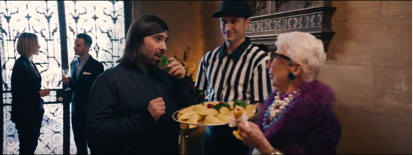
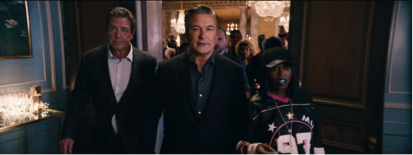
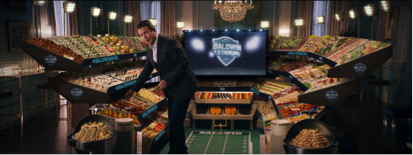

Phase 3 (Post-Game Day) Continuing To Follow Echo and Alec’s Relationship
- Rather than go quietly, we saw this as an opportunity to drive further awareness and views knowing that people continue to search for aired spots online[6]. We created a post-spot focused on the tedious task of re-stocking after a big party, using the ‘Reorder’ and ‘Traffic’ features of Amazon Echo to again reinforce the ways Amazon Echo removes daily frictions. This was further supported through a Twitter Trending Moments campaign and PR pickup.


At each point of contact with Amazon online leading up to game day, we clearly demonstrated the power of Echo in action, weaving it’s magic into dramatized situations to help people imagine all the ways it could make their lives smarter, easier and better.
Finally, we wanted to highlight the power that music has to make any party better.
To accomplish this, we created a partnership with hip-hop icon Missy Elliott. As a guest at the party, we used the commercial to launch her unreleased single ‘Pep Rally’ to the world. Online conversations spread like wildfire, as Missy’s 2.98 million social followers hungered for the chance to hear the new song, sending non-owners flocking to Amazon to discover more about Missy’s track and Echo.
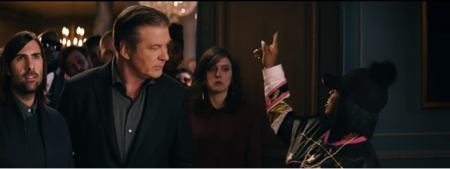
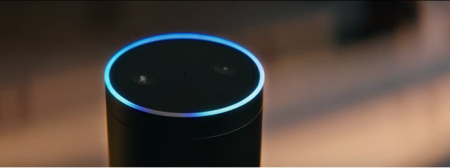
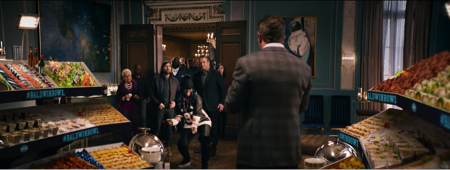
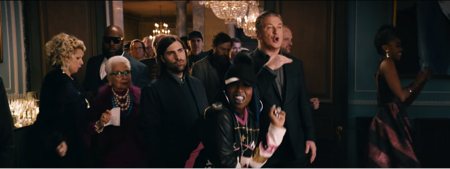
c) Media Plan Summary
- TV
- OLV
- Social (Twitter, Instagram, Facebook, SnapChat, YouTube)
- Digital (Standard + Rich Media)
Our creative was intended to map to existing consumer behaviours during the Super Bowl to make Echo’s features tangible to viewers’ lives. To do this, we made sure that all media decisions aligned to real-time activities and interests people were exhibiting online pre-, during, and post- Super Bowl.
This involved mapping actual consumer behavior in and around Super Bowl events to data from Google, YouTube, Twitter, Mashable, Facebook, Vine, Sysomos, and ESPN in order to inform all media choices, content and campaign timing.
From there we were able to link creative directly to how consumers would be interacting online, allowing them to draw a direct comparison between Alec’s actions with the Echo and their own.

[6] Millward Brown Optimor, 2014
[7] Google Insights Data, Searches for ‘Super Bowl Ads’, 2014-2015
Section V — THE RESULTS
a) How did the work impact attitudes and behaviour?
The #BaldwinBowl became Amazon’s most successful ad ever:

[8]
b) What Business Results did the work achieve for the client?
- Amazon sales were 4x higher than any other campaign in recent years[8]
- Prime Member Registration surged 2.5x vya[8]
- Echo captured a 26% market share in online speaker sales in 2016, surpassing the existing leader Bose at 8%, an increase of almost 1200% from the previous year[9]
c) Other Pertinent Results
Missy Elliott /Prime Music Results:
- ‘Pep Rally’ was downloaded 16,676 times and streamed 1.5 million times in the week following the campaign[8].
- Missy’s Catalog streams increased 200% the week after the spot aired compared to the week before[8]
- There was a 211% increase in streams, 213% increase in album sales, and 61% increase in track sales the week after[8].
d) What was the campaign’s Return on Investment?
Although we would like to include an ROI, Amazon does not provide actual sales numbers to anyone outside of their organization.
[8] Super Bowl 2016 Retrospective, AMAZON, April 2016.
[9] 1010data, “Amazon is completely shaking up another market”, Business Insider
Section VI — Proof of Campaign Effectiveness
a) Illustrate the direct cause and effect between the campaign and the results
All results shared show that #Baldwinbowl exceed performance of any other Echo or Amazon ad since launching in the pervious year (2015).
b) Prove the results were not driven by other factors
Campaign spend vs. history and competition:
As this was the first campaign, and it was created specifically for the Super Bowl, spending levels increased substantially for the Echo.
Pre-existing Brand momentum:
The echo was launched in December 2015 with 2 other TV spots and a series of web videos. Awareness and adoption were high with ‘early adopters’ (though Amazon will no disclose the volume of units sold)
However, ad tracking for those previous spots indicates that the previous Echo ads did not perform well across the board other than Likability for ‘Roadtrip’, and purchase intent remained low.

Pricing:
There was no change in pricing for the Amazon Echo.
Changes in Distribution/Availability:
There were no changes in distribution or availability.
Unusual Promotional Activity:
Running during the Super Bowl gave Echo a massive launch audience, which certainly helped with overall awareness.
Any other factors:
N/A